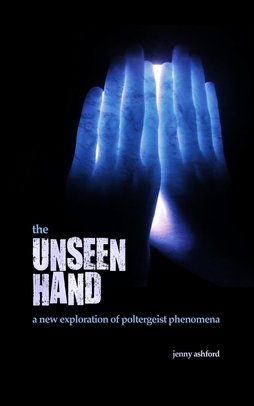
Reviewed by Tom Ruffles
Jenny Ashford is the co-author of several nonfiction titles dealing with poltergeists: The Mammoth Mountain Poltergeist, with Tom Ross; House of Fire and Whispers: Investigating the Seattle Demon House, with Steve Mera, about the Keith Linder story; and The Rochdale Poltergeist, also with Mera. Now she has expanded her range and compiled a 400-page survey of the poltergeist phenomenon in all its variety.
After a brief overview, the contents are divided into categories denoting an escalating severity of events, though obviously there are often overlaps in particular instances: ‘stone throwers’, ‘raps, taps, and bangs’, ‘flying objects & electric anomalies’, ‘water, oil, and blood’, ‘pyromaniac poltergeists’, ‘ghostly apparitions’, ‘violent poltergeists’ and ‘demonic possession’. The volume concludes with brief thoughts on theories which have been advanced to explain the poltergeist. Over a hundred cases are listed chronologically within the categories, dating from antiquity to recent times. Some are mentioned briefly where details are lacking, others are discussed in somewhat greater depth. The net has been cast fairly wide, though British and American cases predominate.
Ashford’s view is that, leaving aside occasional non-paranormal explanations such as misperception and fraud, poltergeists are generally unconscious projections of psychokinetic energy by individuals as a manifestation of extreme emotional stress, though the mechanisms by which this occurs are as yet unknown. When fraud does occur, that does not necessarily mean that the entire business should be dismissed, as there may a mix of genuine poltergeist alongside deception.
Further, she considers ghosts not to be the spirits of the dead but misidentifications of poltergeist activity which is mimicking a ghost, or rather what the witnesses believe a ghost should be like. The same applies to ‘demonic possession’, in reality the most florid example of a poltergeist cast in terms of the experients’ preconceptions, here that demonic entities are real and behave in a certain fashion. The poltergeist is malleable and can be perceived in ways that are in line with the focus’s expectations. Ashford essentially dismisses the survival hypothesis.
The contents are a mixture of the famous (Phantom Drummer of Tedworth, Cock Lane, Rosenheim, Enfield, Stans, Borley, Gef, the Bell Witch, Amherst, Matthew Manning, South Shields, etc.) and the less well known. A few generally considered to be hoaxes are included (Amityville being a good example), to provide context, though there are other dubious ones as well, about which readers are invited to draw their own conclusions. Evidence is presented in an even-handed way. It is fair to say though that Ashford is not a great fan of Ed and Lorraine Warren, characterised as ‘infamous’ at one point, and later as ‘capitalising’ on and ‘hyping’ the murder of Alan Bono by Arne Cheyenne Johnson in 1981 for a book and lecture series.
The cases are all listed in the contents, but an index would have been useful, especially as certain names, such as Harry Price, Mera, the Warrens, and especially William Roll, crop up repeatedly. That omission may to an extent limit the book’s usefulness as a reference tool, but as a compilation it is very readable, not to mention entertaining, and it will make a good introduction for readers wishing to look at the varieties of form the poltergeist can take, whether or not they agree with Ashford’s general views on aetiology. It is light on analysis, considering possible explanations in a few pages, but the bibliography contains many useful suggestions for further reading, and The Unseen Hand will encourage further exploration of this enduring topic.

